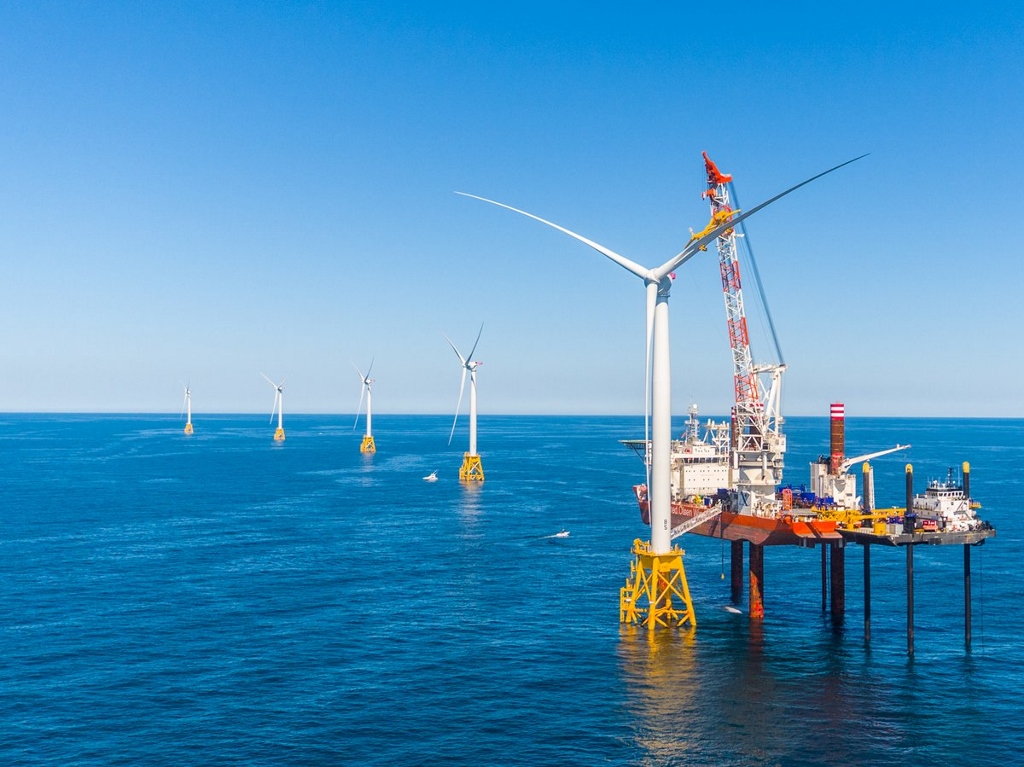Congress’ amendments to the Jan. 1 National Defense Authorization Act “cleared up any ambiguity” that all U.S. laws governing offshore energy apply equally to the new wind sector, a top maritime lawyer says.
“Prior to that, it wasn’t so clear…All those laws are crystal-clear now,” Charlie Papavizas, chair of maritime practice in the international law firm Winston & Strawn, told a national online audience during the Business Network for Offshore Wind’s Ports and Vessels online conference Tuesday.
After months of lobbying by U.S. offshore operators and wind industry advocates, Congress added provisions to the annual defense spending bill to specify the Merchant Marine Act of 1920, also known as the Jones Act, must apply to vessels and cargo involved in offshore wind development.
Lawmakers came to bipartisan agreement that the 1953 Outer Continental Shelf Lands Act, which has governed offshore oil and gas development, likewise applies to renewable energy.
The Jones Act requires that cargos moved between U.S. ports be carried by U.S.-flagged and crewed vessels. Questions of whether exemptions can be granted for using foreign vessels and crews – particularly wind turbine installation vessels, or WTIVs which have yet to be built in the U.S. – are an issue the nascent industry needs resolved.
That in turn could trigger a spate of new rulings from U.S. Customs and Border Protection, which reviews industry questions that arise under those laws.
Requests for rulings have languished, some for years, because of uncertainty within the agency, said Papavizas. “That logjam is now gone” and maritime businesses can anticipate many more rulings in coming months, Papavizas predicted.
Another major factor is still lurking in the federal court system, where long-running litigation over the Jones Act between oil companies and offshore operators is working its way through a Washington, D.C. court.
“That litigation is still pending” and could bear on how offshore wind development is regulated too, Papvizas cautioned. “At any moment we might get a ruling.”
President Biden will prove himself a strong supporter of the Jones Act and developing U.S. maritime jobs from offshore wind, Papavizas told Liz Burdock, president and CEO of the Business Network for Offshore Wind.
“He’s a strong supporter” of the Merchant Marine Act, said Papvizas. “I would not expect that being amended or repealed…He’s very tight with maritime labor.”
How the Biden administration approaches permitting for offshore wind construction will be a key pivot point for when developers and shipbuilders commit to building new U.S. flag vessels.
With costs for building a U.S. flag WTIV estimated at $500 million, investors are hesitant without having that book of business lined up” for future offshore construction, said Matthew Rosenberg, a senior analyst with the Government Accountability Office and an author of an agency report issued in December on vessel needs for the wind industry.
The keel has been laid for the first Jones Act-compliant WTIV, which will be used to build Dominion Energy’s planned 2.6-gigawatt projects off Virginia.
But uncertainty was brought in again when the outgoing Trump administration’s Department of Interior leadership abruptly announced the Vineyard Wind developers would need to restart the permit process with the Bureau of Offshore Energy Management for their 800-megawatt plan off southern New England.
“A lot of the industry was waiting to see if BOEM would approve Vineyard Wind,” said Rosenberg.



.JPG.small.400x400.jpg)

